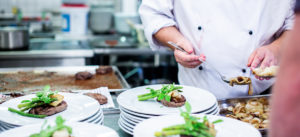What sets apart a successful restaurant from a great one is often credited to how it engineers its menu. How great an impact menu engineering will have depends on your knowledge of the menu of your restaurant, and your willingness to devote time and effort into understanding and executing the process.
Firstly, what is menu engineering? Simply, it’s the practice of analysing and designing your menu to maximise restaurant profits. Restaurants do this in a number of ways: Balancing high and low food cost items, featuring or promoting select items

But before you get into that, start by costing your menu. To understand and implement menu engineering effectively, start by assessing the profitability of menu items by calculating the food cost of each item. While this may seem like an overly tedious step, performing an audit will ensure that you take note of your purchases and how much money is going in and out.
- List all the ingredients needed in each dish. This includes even the nitty-gritty like seasoning, oil and garnish.
- Identify the cost of each ingredient and divide that cost based on how much of each ingredient is used to make the dish. Eg: If you purchase garlic for 30 cents and it contains 10 cloves, each clove costs 3 cents. If a dish requires eight cloves, then the cost of garlic for that dish is 24 cents.
- Compute the extras such as delivery, interest rate, and other expenses related to inventory.
- Ensure that labour costs are not included in this calculation as this is falls under a separate category.
Once you’ve completed costing your menu, head to the next step of Menu Engineering: Dividing your menu into categories and sections.
Want to find out more? Learn about our Chope products, and subscribe to Chope For Restaurants for tips on how to ace the restaurant business.











